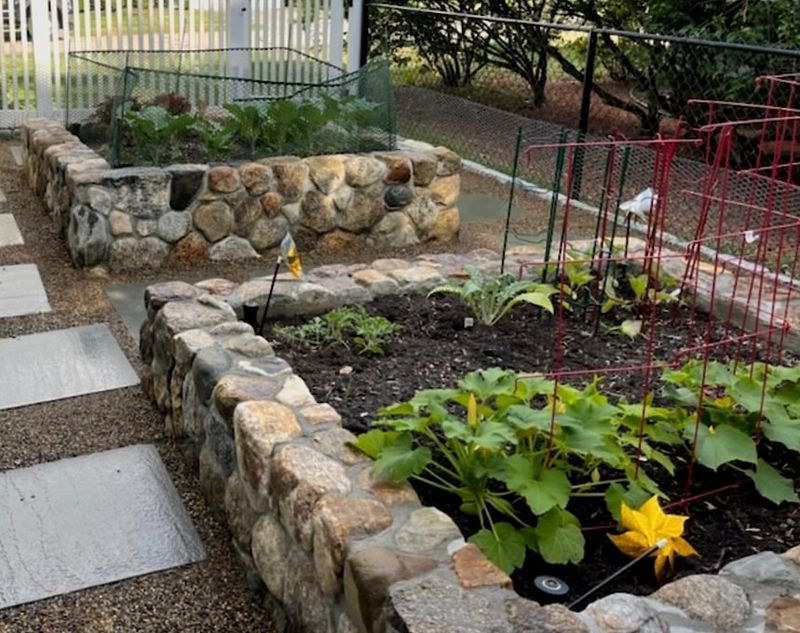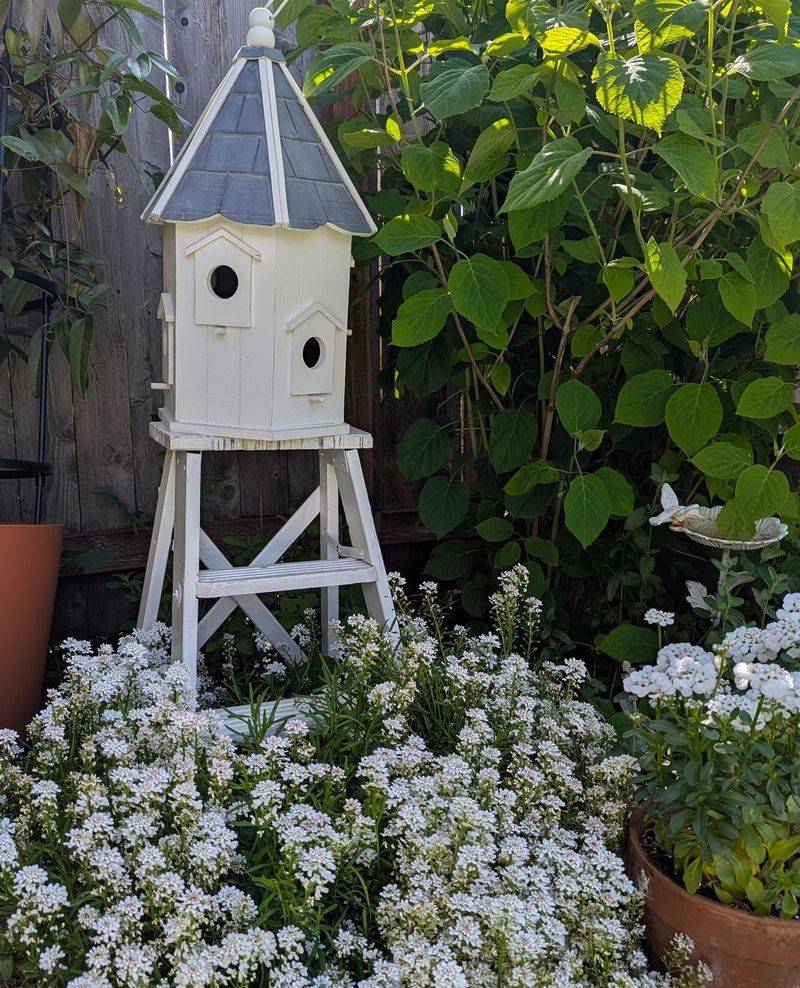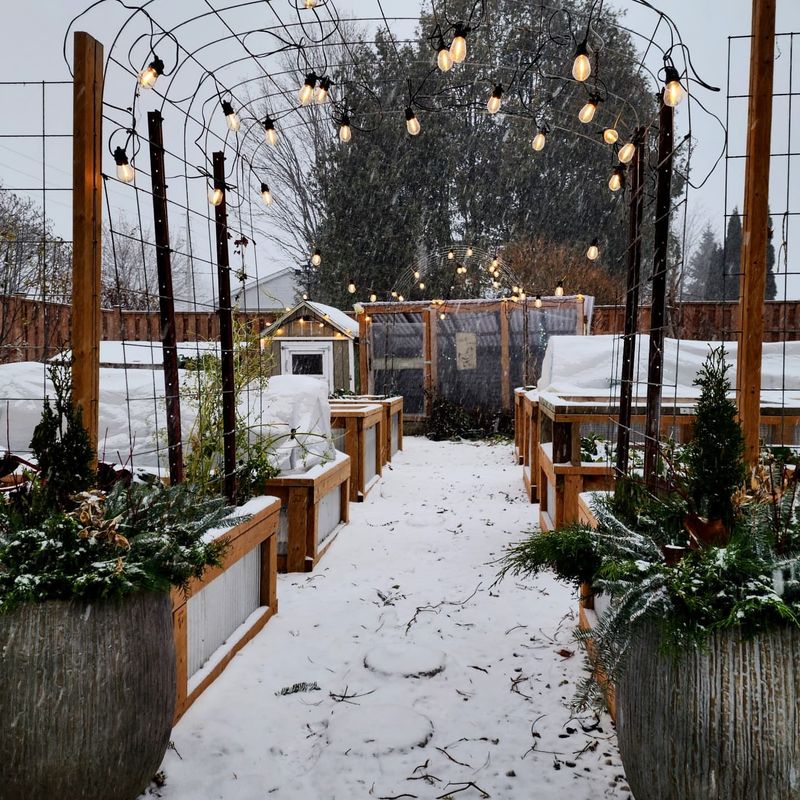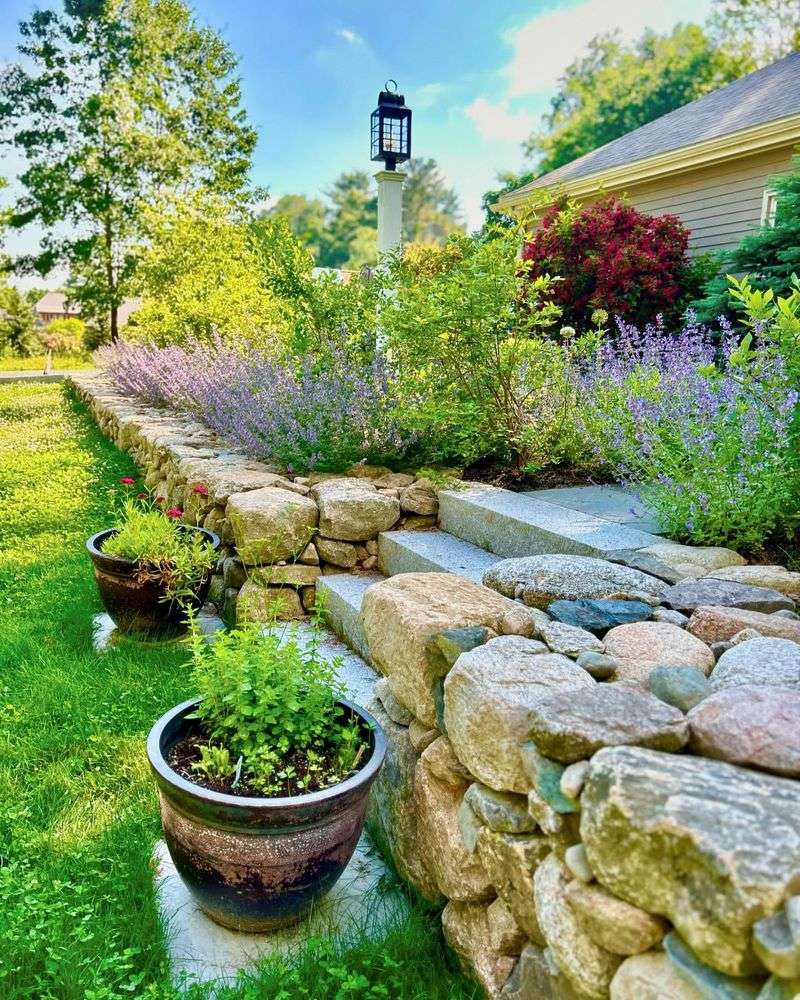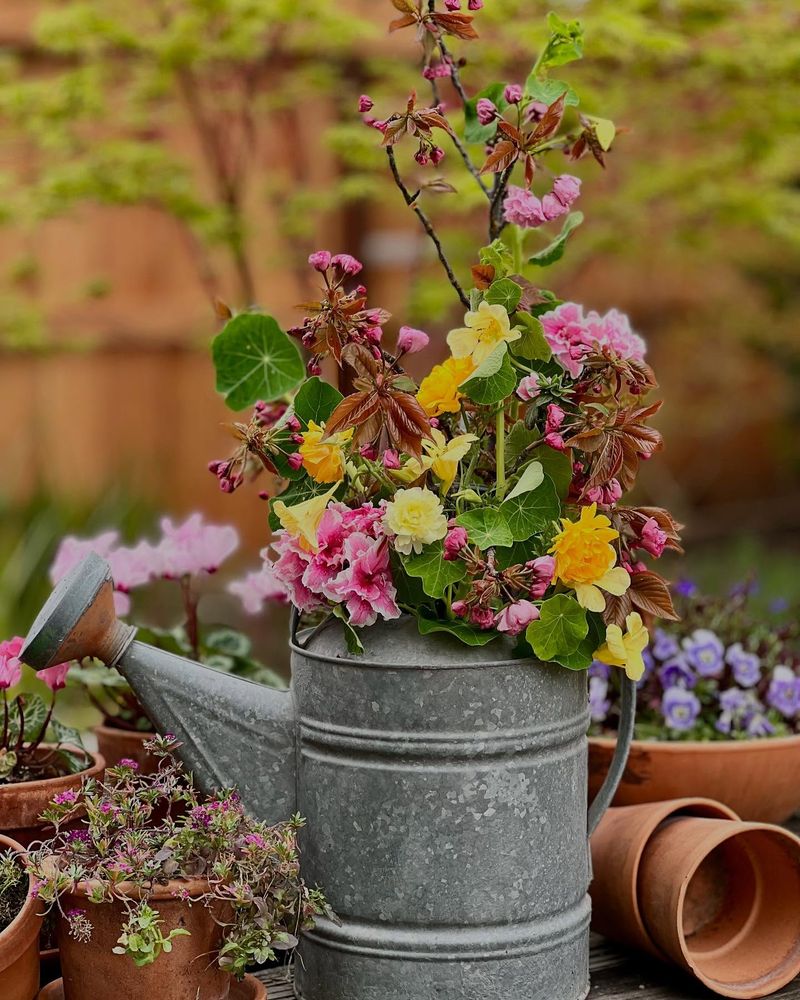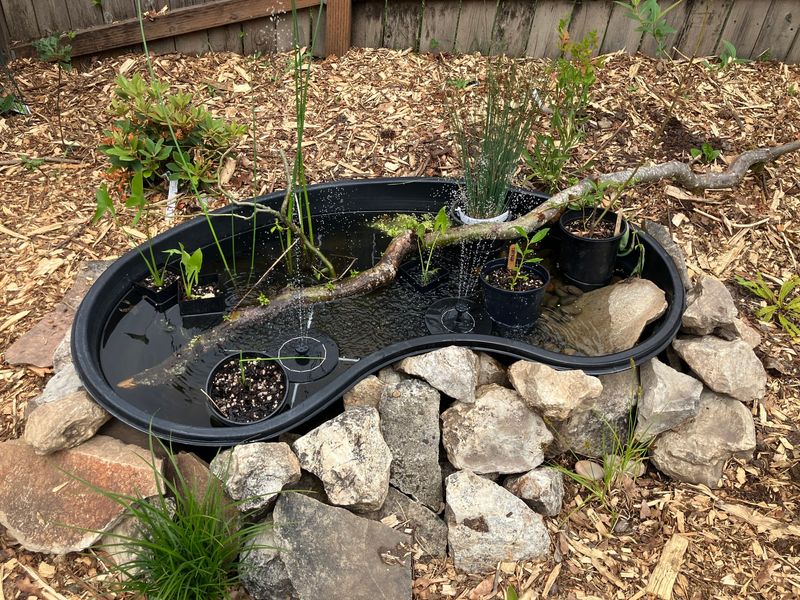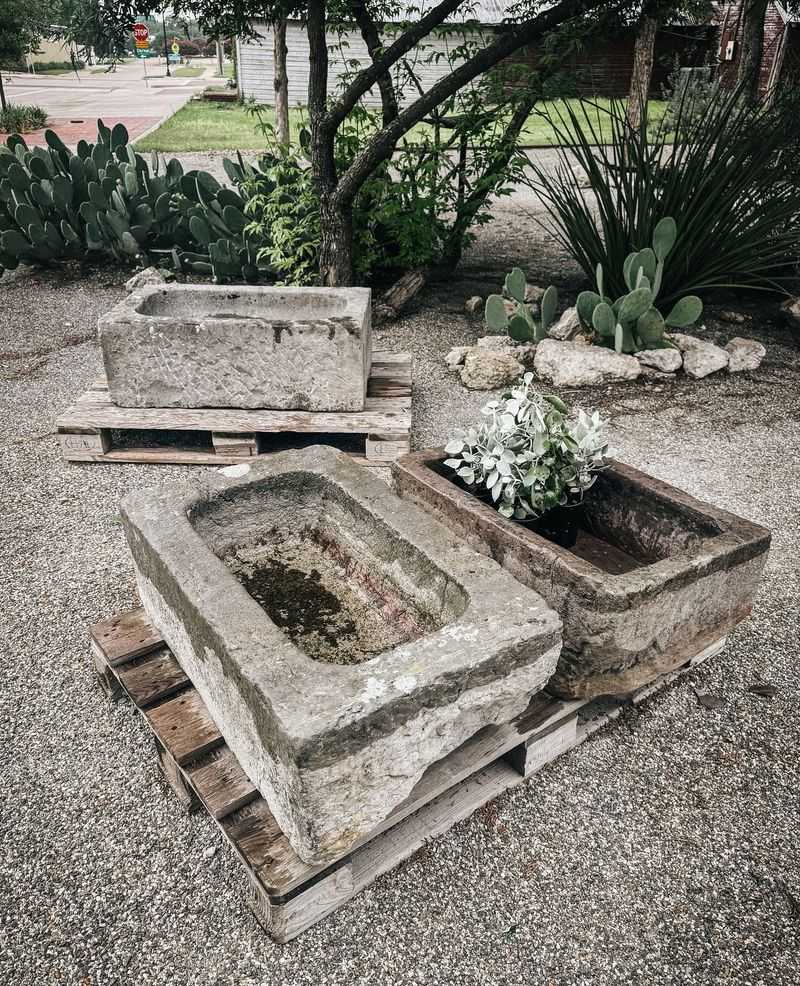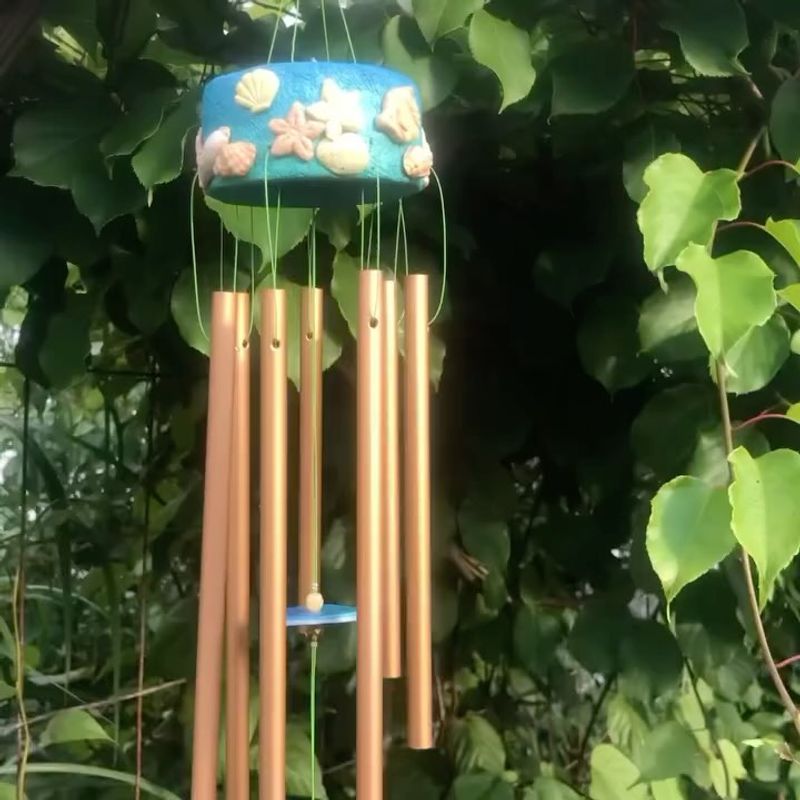Boston gardeners have created a distinctive trend by incorporating foraged elements into their raised bed designs. Walking through neighborhoods from Back Bay to Jamaica Plain, you’ll spot everything from beach stones to fallen branches adorning these urban growing spaces.
This creative approach not only beautifies gardens but connects city dwellers with nature in meaningful ways.
1. Connecting With New England’s Natural Heritage
Boston’s deep roots in colonial history inspire gardeners to honor traditional connections with the land. Many residents incorporate pine cones, acorns, and beach stones collected during family outings to Cape Cod or hikes in the Blue Hills.
These natural elements tell stories of weekend adventures while creating visual ties to the region’s ecological diversity. Children especially enjoy contributing their treasured finds to the family garden.
2. Sustainable Gardening On A Budget
Money-conscious Bostonians appreciate that foraged materials cost absolutely nothing. In a city where housing prices continue to climb, gardeners find creative satisfaction in decorating with driftwood, interesting rocks, or fallen branches collected during neighborhood walks.
Rather than purchasing mass-produced garden décor, these thrifty urban gardeners transform what others might consider trash into garden treasures. The savings add up quickly compared to store-bought alternatives.
3. Weather-Resistant Decorations For Harsh Winters
Boston’s infamous winters wreak havoc on conventional garden decorations. Plastic fades and cracks, while metal rusts under repeated freeze-thaw cycles and road salt exposure.
Naturally weathered materials like driftwood, stones, and pine cones have already proven their durability against New England’s harshest elements. Unlike store-bought decorations that deteriorate after a season or two, these foraged accents develop character with age and require zero maintenance.
4. Creating Microclimates For Specialty Plants
Smart gardeners position larger foraged stones strategically within raised beds to regulate temperature. These natural heat sinks absorb daytime warmth and release it gradually overnight – extending growing seasons in Boston’s variable climate.
Strategically placed driftwood creates partial shade for tender greens during summer heat waves. Beyond mere decoration, these foraged elements serve practical purposes in urban microclimate management, helping gardeners grow crops that might otherwise struggle in the city environment.
5. Neighborhood Conversation Starters
Nothing breaks the ice with neighbors like an unusual garden feature with a story behind it. Bostonians proudly explain the origins of a gnarled piece of driftwood from Revere Beach or unusual stones collected during a family hike at Middlesex Fells.
These conversation pieces foster community connections in a city where neighbors might otherwise remain strangers. Garden-focused interactions have sparked friendships, plant swaps, and even neighborhood beautification projects among previously unacquainted residents.
6. Wildlife Habitat Enhancement
Hollow logs and strategically stacked stones create perfect hideaways for beneficial garden allies like toads, native bees, and ground beetles. Boston gardeners enhance biodiversity by incorporating these habitat features disguised as decorative elements.
Children delight in discovering these mini-ecosystems within urban settings. Many gardeners report fewer pest problems after adding habitat features, as natural predators establish populations among the decorative yet functional foraged materials.
7. Historical Artifact Showcases
Boston’s rich history occasionally reveals itself in unexpected finds. Gardeners incorporate weathered brick fragments, sea glass, or even colonial-era pottery shards unearthed during yard projects into their raised bed borders.
These historical elements create talking points while preserving neighborhood heritage. The Boston Archaeology Program even encourages residents to document significant finds while repurposing minor fragments as garden accents – blending historical appreciation with modern urban gardening practices.
8. Artistic Self-Expression Beyond Conventional Gardening
For many Bostonians, garden spaces serve as personal canvases. Architects arrange stones in precise geometric patterns, while artists create whimsical driftwood sculptures among their vegetables.
Teachers incorporate educational elements like rock identification markers, and musicians might arrange materials to create wind chimes or rain sounds. These personalized touches transform utilitarian growing spaces into expressions of identity and creativity that transcend traditional gardening while using materials that cost absolutely nothing.


